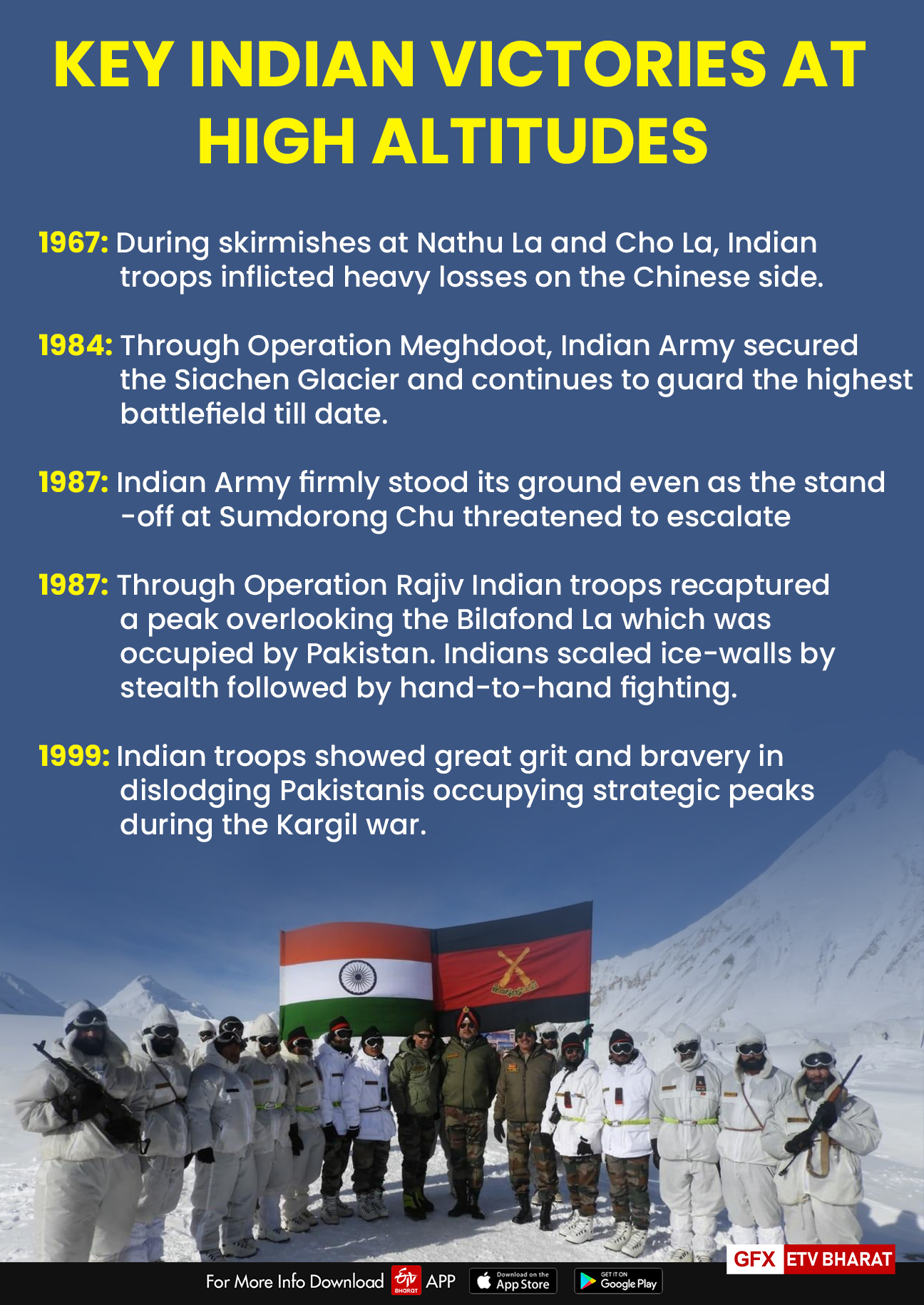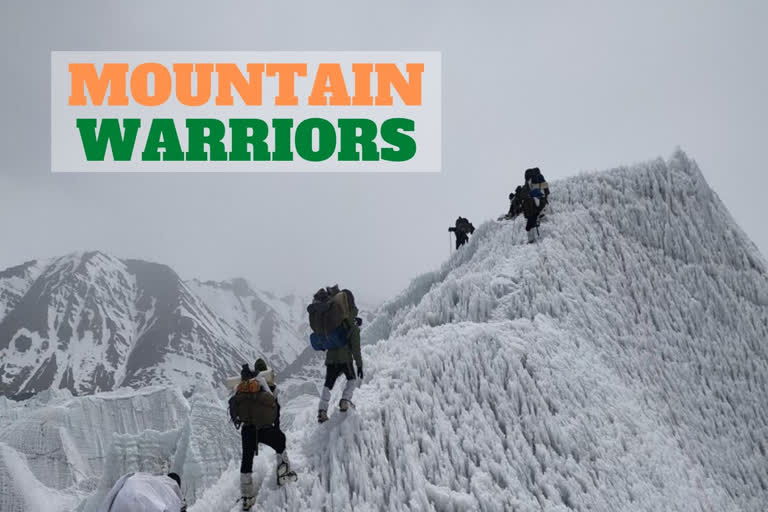Hyderabad: The recent violent military face-off in Ladakh's Galwan valley, in which 20 Indian soldiers were martyred, once again reminded people about the extreme grit and determination troops show in protecting the nation's borders at high altitudes.
India's rich history in mountain warfare goes back to the time before independence, as the Red Eagle Division (Now 4 Infantry Division), made a formidable reputation for itself in the mountains of Eritrea in March 1941, where it defeated hugely superior Italian forces at Keren. The division had even greater success when it took part in the Italian campaign against strongly entrenched German forces during World War II.

Presently, Siachen Glacier, the world's highest battlefield, is the perfect example of the Indian Army's prowess at high altitudes. The army has set up hundreds of outposts at the Siachen area at an altitude of over 5,000 metres. Around 6,000 to 7,000 troops are stationed in the area, with the highest post at an altitude of 6,749 metres.
Setting up of Mountain Divisions
After the 1962 debacle, large-scale reorganisation and expansions took place within the Indian Army to strengthen our borders. The Ski School at Gulmarg was upgraded to the High Altitude Warfare school, and Mountain Divisions was raised which were equipped and trained for operations in high altitude areas. Defensive tactics were evolved and our positions along the LAC greatly strengthened.
Currently, the Indian Army is the largest mountain fighting force across the world with more than 2,00,000 troops in 12 divisions.
Read: Army Chief on visit to forward locations in Eastern Ladakh, to interact with troops
"At present, the world's largest and experienced country with plateau and mountain troops is neither the US, Russia, nor any European powerhouse, but India," Chinese expert Huang Guozhi, senior editor of the Modern Weaponry magazine, had heaped praises on the Indian Army.
Mountain Strike Corps
The aim of raising the mountain strike corps in a non-defensive role was to create capabilities to deter China's aggressive behaviour along the 3,488 km long Sino-Indian border. Following the Chinese intrusion in the Depsang sector in May 2013, the government was quick to hand out its approval.
Read: Defence Minister Rajnath Singh meets Russian Deputy PM Yury Borisov
The first division of the corps started being raised in January 2014, in the eastern sector Panagarh, in West Bengal. However, the raising of the second division at Pathankot in 2017-18 was never completed owing to paucity of funds and a rethink within the Army.
Key Training centres in India for Mountain warfare
India's Mountain Warfare Schools
The Indian Army has a High Altitude Mountain Warfare School (HAWS) near Gulmarg in Jammu and Kashmir that is highly regarded around the world for its elite and specialised training. HAWS is routinely visited by Special Operation Teams from the US, UK and Russia. The school produces some of the world's finest soldiers who are considered among the very best in high altitude and mountain warfare.
Besides, the Indian Army has also set up the Kargil Battle School in the Dras sector of Kargil district in Jammu and Kashmir, which trains soldiers in mountain warfare.
Read: Defence partnership important pillar in India-Russia relation: Rajnath



